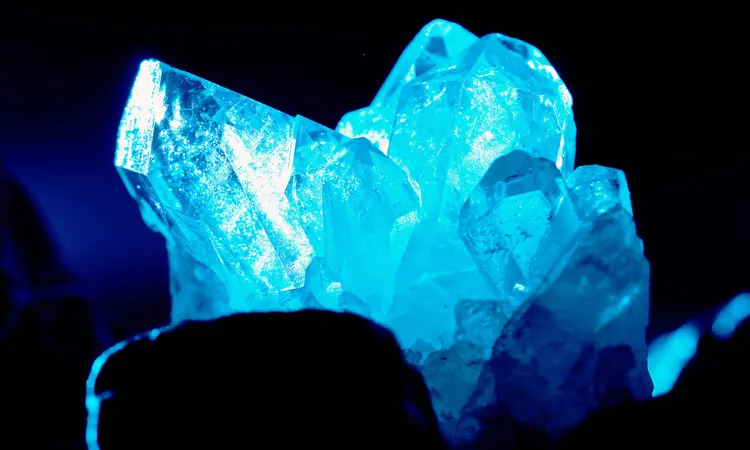
Shocking Discovery: 'Giant' Dinosaur Spider Fossil Unearthed in Australia!
2024-11-09
Author: Ken Lee
Introduction
In an astonishing find that could haunt your dreams, scientists have uncovered the fossilized remains of a giant trapdoor spider in New South Wales. Dubbed *Megamonodontium mccluskyi*, this spider is only the fourth specimen of its kind ever discovered in Australia, making it a rare treasure in the world of paleontology.
A Glimpse into the Past
Imagine a creature that once thrived in what was formerly a lush rainforest, teeming with life! Fossil evidence indicates that millions of years ago, this area was a vibrant ecosystem filled with plants, giant cicadas, wasps, and, of course, these formidable spiders. Today, it has transformed into the grassland region known as McGraths Flat.
The Size of Terror
The researchers estimate that this formidable arachnid roamed the Earth during the Miocene period, approximately 11 to 16 million years ago. What’s even more terrifying? This creature was five times larger than the trapdoor spiders you might encounter today! Its body measured a jaw-dropping 23.31 millimeters (just over an inch long) and is now the largest fossilized spider ever found in Australia.
Scientific Significance
Paleontologist Matthew McCurry from the University of New South Wales emphasized the importance of this discovery. "Only four spider fossils have ever been found on the entire continent, which complicates our understanding of their evolutionary history. This finding sheds new light on spider extinction and offers crucial insights into the ancient ecosystems of Australia."
A Glimpse of Their Relatives
The closest living relatives of this giant spider currently reside in the moist forests of Singapore and Papua New Guinea. This revelation hints that these spiders once occupied similar environments across mainland Australia, but as the continent turned increasingly dry, many species went extinct.
Preservation and Analysis
In an impressive display of preservation, the fossils discovered were remarkably well-maintained, allowing researchers to examine subcellular structures using advanced scanning electron microscopy. This technique revealed intricate details of the spider's claws and setae on its legs and body, solidifying its classification within the Monodontium family of trapdoor spiders.
Climate History Insights
What's more, the discovery of *Megamonodontium mccluskyi* provides significant clues about Australia’s climate history. Being found in rainforest sediment suggests that this region was once significantly wetter, leading scientists to draw parallels to how current climate changes may impact Australia’s biodiversity.
Impact on Arachnology
For arachnologists like Robert Raven from the Queensland Museum, this finding is monumental. "This species marks the first fossil in the family Barychelidae found worldwide! While there are about 300 species of brush-footed trapdoor spiders alive today, they are rarely fossilized, likely due to their burrowing lifestyle."
Conclusion
This groundbreaking study has been published in the Zoological Journal of the Linnean Society and is sure to stir excitement in both the scientific community and spider enthusiasts alike. As we uncover more about our planet's ancient inhabitants, who knows what other secrets the past may hold? Stay tuned for more thrilling discoveries!





 Brasil (PT)
Brasil (PT)
 Canada (EN)
Canada (EN)
 Chile (ES)
Chile (ES)
 España (ES)
España (ES)
 France (FR)
France (FR)
 Hong Kong (EN)
Hong Kong (EN)
 Italia (IT)
Italia (IT)
 日本 (JA)
日本 (JA)
 Magyarország (HU)
Magyarország (HU)
 Norge (NO)
Norge (NO)
 Polska (PL)
Polska (PL)
 Schweiz (DE)
Schweiz (DE)
 Singapore (EN)
Singapore (EN)
 Sverige (SV)
Sverige (SV)
 Suomi (FI)
Suomi (FI)
 Türkiye (TR)
Türkiye (TR)